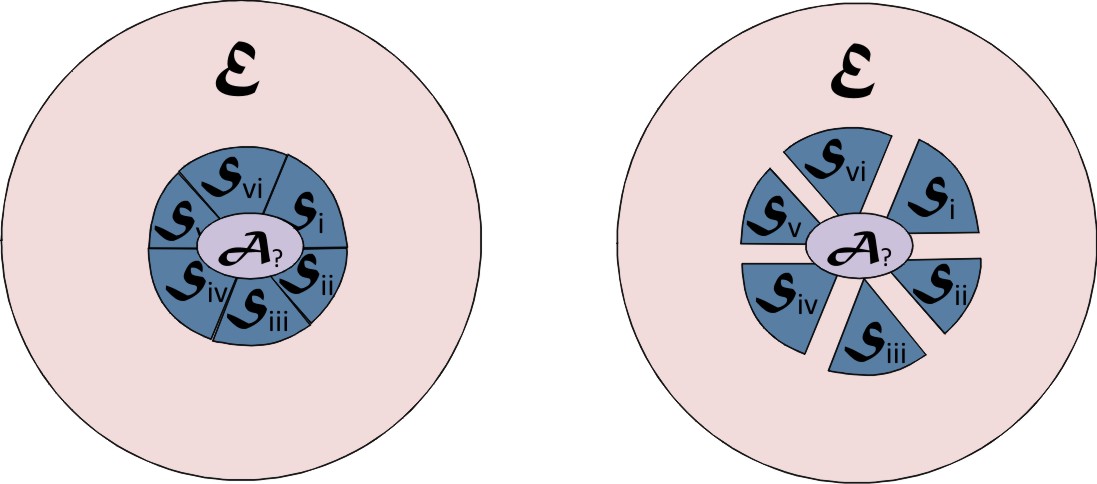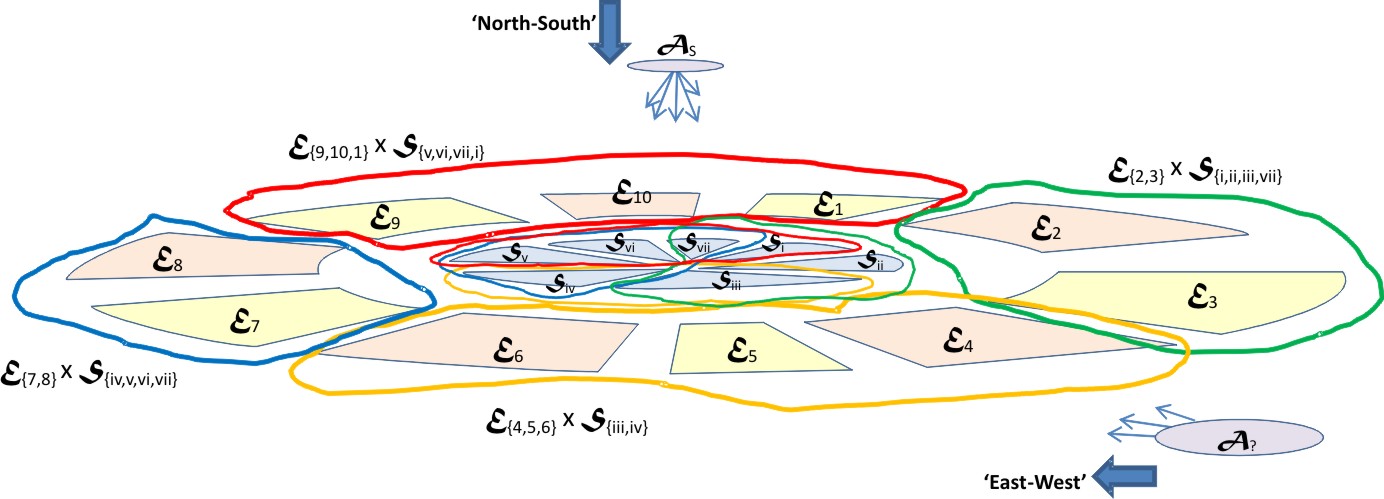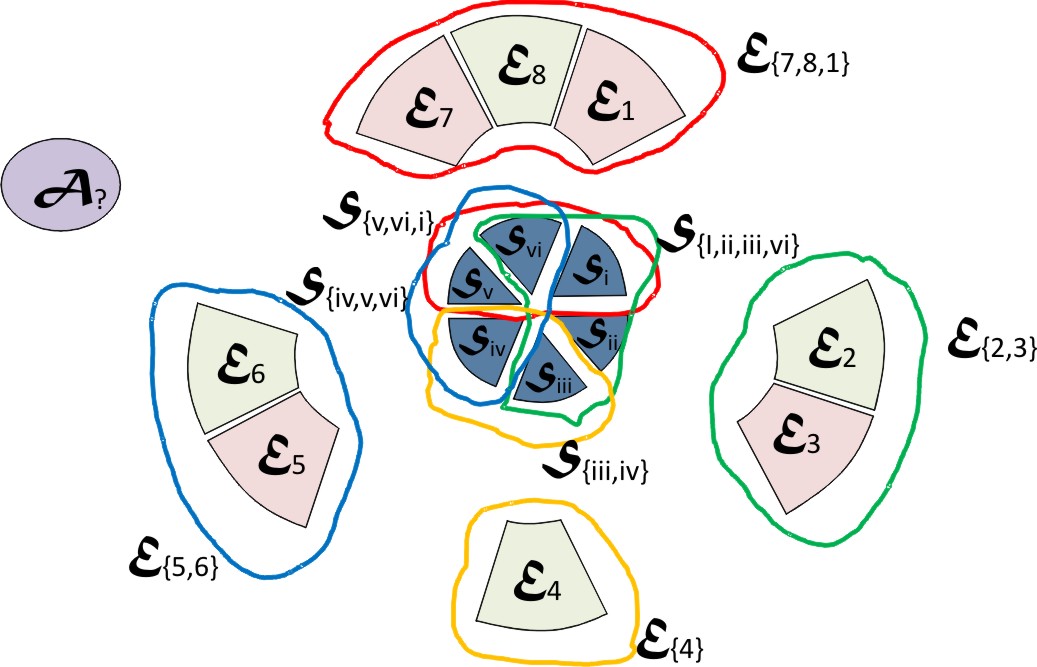Another thing that it has proved very difficult to grasp has been the difference between directed and collaborative systems of systems.[1] In the case of the directed system-of-systems, the formation of the system-of-systems may be under the direction of a single enterprise or a contracted (prime) entity [2], but with collaborative systems-of-systems this is not the case – the way systems can be brought together by users is no longer under the direction of a single entity. How does this change the architect’s task?
In practice, even ‘green-field’ directed systems-of-systems are then deployed into environments in which they are expected to interoperate with systems-already-in-the-field in ways never anticipated by their designers. So in-the-field, everything begins to look like a collaborative system-of-systems, as evidenced for example in the introduction to a special issue on evolving critical systems, in which ‘entanglement’ and ‘increased evolution tempo’ are put forward as game changers in the processes of design. More recently, this issue has begun to be addressed in the Systems Engineering Body of Knowledge under the rubric of the ‘Extended Enterprise’ in Enterprise Systems Engineering, and ‘collaborative’ or ‘virtual’ Systems of Systems. But what makes this issue so challenging to address? Why has it taken so long to recognise the different kind of engineering challenge that these collaborative systems-of-systems present?
When considered under the Quantum Metaphor, this begins to be apparent. If we think of the system S as made up of a number of systems Si, Sii and so on, then a ‘directed’ approach to bringing them together as a system-of-systems will be based on a one-sided approach to the environment E i.e. the sovereign entity A will define those aspects of the environment that will be relevant within a ‘classical’ worldview (all systems within one enterprise on the left – a ‘directed’ system-of-systems, multiple enterprises on the right – an ‘acknowledged’ system-of-systems):

But a relation to demand that is multi-sided at a given tempo means that each relationship to demand will select different states of the system-of-systems, i.e. the multi-sidedness of the particular relationships means that they select the ‘local’ nature of the system-of-systems. If we accept that the way some of the local relationships select states of the system are correlated, so that there is a limited variety of local states, then under the quantum metaphor, these different local states will involve different selections of states of the individual systems. For example multi-sided environment E{2,3} will select system-of-systems S{i,ii,iii,vi} (as in the clinic managing a number of different complex combinations of care pathways in relation to different patient conditions):
Again, this presents the accountability system with a new kind of challenge – to track not only multiple forms of environment, but also multiple forms of alignment of systems-of-systems. Why? Because under the quantum metaphor, the state of S as a whole cannot be derived from SiSiiSiii… etc independently of their environment because of the differing effects of entanglement and selection on each of the separate systems.
So in order to be able to say something about the whole, it is necessary to describe[3]
- the different forms of entanglement between system and sub-environment,
- the different ways in which different sub-environments suppress different states of the system-of-systems,
- the relationship between different distributions of sub-environment and corresponding distributions of states of the system-of-systems, and
- to establish metrics across all of these in order to be able to quantify value.
The point, of course, is that within a given tempo of operations, the system-as-a-whole is dealing with probability distributions of ‘quantum’ states of the system-of-systems selected by different sub-environments presenting different forms of multi-sided demand. The accountability systems can no longer be identified solely with the supplier – they have to be able to derive the benefit to the supplier from an understanding of the dynamic behaviour of the multi-sided demands with which it is interacting within a larger ecosystem – a shift from working within a single ‘global’ coherence frame to working within multiple ‘local’ coherence frames. In the following diagram, this is related back to the ‘North-South’ versus ‘East-West’ perspectives – the former, being ‘classical’, leaves the complexity associated with different forms of local coherence to a Faustian process; the latter, having to deal with a ‘quantum’ understanding of aligning systems with local environments, has to develop new ways of managing value. So for example, S{v} is a complementor that has to collaborate with other complementors in two different ways (S{iv,v,vi,vii} and S{v,vi,vii,i}) in order to support two different kinds of customer situation – E{7,8} and E{9,10,1}, while the role of AS becomes one of providing the platform strategy that makes this possible: [4]

In the case of the clinic example, the different kinds of customer situation are different kinds of patient condition demanding different kinds of treatment strategy (i.e. collaborating treatments within multiple episodes of care) through the life of the patient’s condition, and the platform strategy is one that enables this variety of treatment strategies to be held accountable for their through-life effects on patients’ conditions.[5]
Notes
[1] This distinction is discussed for example in Evaluating platform architectures within ecosystems, Supporting social complexity in collaborative enterprises, Ideologies of Architecture, or in Architectures that integrate differentiated behaviours. The difficulty appears to be in letting go of the need for a single coordinating enterprise responsible for the whole – the need for a sovereign entity.
[2] With ‘Directed’ or ‘Acknowledged’ systems-of-systems there is a single entity responsible for delivering the performance of the whole (e.g. a defence system or the UK national patient record system that was). But the essence of a ‘Collaborative’ system-of-systems (for example the platform architectures of iPhone or Android), is that it leaves the user to assemble their own combination of services on the platform. See Designing collaborative systems of systems in support of multi-sided markets, or Evaluating platform architectures within ecosystems.
[3] This was the methodological challenge taken up by my PhD thesis – Evaluating platform architectures within ecosystems: modeling the supplier’s relation to indirect value.
[4] The “new ways of managing value” refers to [3] and the importance of indirect value in these multi-sided environments and of the platform architectures needed to capture it.
[5] As I did with colleagues for the UK’s NHS orthotics clinics, and in recommendations to increase the responsiveness of e-Government.
